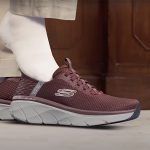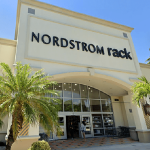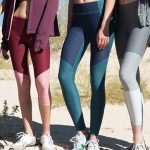Bauer Performance Sports Ltd. last week entered into a definitive agreement to acquire Cascade Helmets Holdings, Inc., the maker of men’s and youth lacrosse helmets in North America, for a purchase price of U.S. $64 million. The acquisition is expected to close in late June, subject to satisfaction of customary closing conditions.
The acquisition will be the fourth company Bauer Performance Sports has snapped up since being acquired itself by Kohlberg & Co. in 2008. At the same time, the company has logged an impressive stretch of robust revenue and cash flow growth.
In the nine months ended Feb. 29, revenues jumped 23.7 percent to $294.2 million. Driven by particular success with its VAPOR APX skates and composite sticks, ice hockey equipment revenues were up 25.3 percent in the period while apparel grew 24.5 percent and lacrosse jumped 41.2 percent. Earnings in the period reached $23.3 million, or 74 cents a share, up from $2.5 million in the year-ago nine months.
Most encouragingly, 2012 Back-to-Hockey season booking orders were running up 14 percent on a currency-neutral basis on top of a 32 percent gain in the prior year.
Here, Kevin Davis, president and CEO, discusses the Cascade Helmets acquisition, its dominant hockey business, its technology-driven platform, recent acquisitions and what’s next for the acquisitive company.
What attracted you to Cascade Helmets?
The Cascade Sports brand aligns well with other Bauer Performance Sports brands, especially Maverik Lacrosse. The company also meets four important criteria: it has the ability to leverage Bauer Performance Sports’ world-class consumer products platform, it is a brand that is an industry leader, it is a strong and authentic brand and it is a brand that provides equipment for a sport (lacrosse) that demands innovative performance products. The acquisition of Cascade expands our overall presence in the high-growth lacrosse market and complements our existing Maverik lacrosse business by adding the leading helmet brand in the sport. The acquisition creates a full line of lacrosse products for the fastest growing team sport in North America under the Bauer Performance Sports portfolio.
Hockey: How does it support your hockey coverage and complement the Bauer brand business?
Bauer and Cascade have both developed helmets that feature advanced technologies designed to maximize protection. Bauer’s current elite-level helmet, the Bauer RE-AKT, is the first hockey helmet specifically designed to manage all types of hits in hockey and the M11 Pro helmet performs extremely well at the highest-level energy impacts. We believe the combination of the technologies used by both brands will result in the most comprehensive line of helmets that will offer the best protection in the industry. We are currently examining how best to combine the technologies and expect a consolidated hockey helmet line-up to hit retail in the future.
Overall, How is the sport of hockey doing these days? According to the Sporting Goods Manufacturers Association, hockey participation last year was the second fastest growing team sport. According to USA Hockey, registered players in the U.S. 8 and under increased 10 percent in 2010/2011 season. What’s happening is whenever an NHL team goes deep into the playoffs or wins the Stanley Cup, you see increases in youth participation in that region. That’s also helping the sport extend its reach. The New York Times put out a piece a couple of months ago about the hot spots for hockey and where it is growing in the U.S. is really the warm weather regions like Florida, Arizona and California. And adults are also picking it up. There’s a tremendous amount of adults learning to play.
How much of Bauer Performance’s success is tied to hockey? As a company, it’s our largest business and we control 49 percent of the ice hockey equipment market alone. But in the last couple of years we’ve expanded. We’ve bought a roller hockey company, Mission Hockey, and a lacrosse company, Maverik Lacrosse. So we’re going to continue to look to expand our business into those other markets where our technology platform makes sense. Kids who play these sports are looking for high-performance equipment and that’s not easy to make. It takes a real focus on R&D and a significant level of innovation to make it happen. We can do that and we’re particularly excited about lacrosse. While it’s a very fast growing sport, it’s a very low technology sport in our opinion. So we think we can bring real innovation to lacrosse like we have in hockey.
What’s driving your recent success over the last few years? It all starts with product. We invest two to four times in R&D what our nearest competitors are investing and that results in extremely high performing products. If you put gimmicks out into the market in sports like hockey, lacrosse, roller hockey, etc., kids may buy it the first time, but they won’t buy it again if it doesn’t help to improve their game. We are committed to improving the game for every player at every level.
What new launches are you particularly excited about? In mid-May, Bauer introduced the new RE-AKT helmet to retail. It is the only hockey helmet in the market that helps protect against all types of impacts that the hockey player may receive in a game. Traditional hockey helmets were designed to protect against big catastrophic hits the skull fractures. And that’s a good thing because since they came out with that standard, you don’t hear about skull fractures as frequent injuries so it has worked. But we’ve found studies that show that the majority of impacts that a hockey player gets to his head during a game are low-energy hits. It’s these series of smaller, low-impact hits that can also cause significant damage. So the liner features a super-light pliable material called PORON XRD, which Bauer has an exclusive on in hockey, which protects against these lower-impact hits. It also protects against rotational-force impacts, which several of the medical professionals we work with believe is a significant contributor to many concussions. The helmet features SUSPEND-TECH, our free-floating stretchable liner that moves independently from the rest of the helmet to better manage rotational forces. It’s the only helmet that is designed to protect against high-energy impact, low-energy impact and rotational forces.
What other newer innovations do you have in protection? Bauer’s SUPREME TOTALONE goal protection, which was first worn by the Rangers’ Henrik Lundqvist at the Winter Classic, features the MYFLEX system, a proprietary technology that allows goalies to continually customize the flex zones of their pads in a matter of seconds. We’re also marking the first full season of launching the industry’s first integrated neck protector with the aid of our acquisition Jock Plus Hockey. Two-thirds of the world’s youth hockey players (Not in the US) are required to wear cut-proof neck protection around their neck. Historically the answer for neck protection was a big foam neck protector attached with Velcro. It’s uncomfortable. The kids tuck it in and do everything they can to move it down. So we’re the only company that combines the protection with a base layer shirt and we have an exclusive on this worldwide. It’s been huge.
What about skates? The big launch this year is the NEXUS family, which is the first new full family of products introduced by Bauer since the debut of the VAPOR skate in 1997. The skates offers a wider fit than both the VAPOR and SUPREME collections while the stick line offers a unique flex profile. With NEXUS, we now have a product solution for every single hockey player and it’s designed really to take other products off the wall. Already, a lot of the world’s best players are using the product. It launches at retail in June.
Any new categories? We have a new line of socks at retail, Bauer Elite Performance Skate Socks. They’re constructed of 60 percent KEVLAR brand fiber that’s designed to protect cuts from the back of the ankle from a skate. They’re yellow because KEVLAR can’t be died. There’s nothing else like it out in the market.
How about Maverik? We have a new glove, Rome, that we launched this year with Maverik. It’s the first joint technology program where we combined Bauer Performance’s manufacturing processes and Maverik’s technology. It features a low profile fit, premium palm and advanced flexibility. We can’t sell enough of these.
Why did you buy Maverik? Some major sports brands have moved into the lacrosse category with their flagship brands. We think that’s one of the common follies in high-performance sports equipment. That consumer wants an authentic brand. We could never get the Nike brand to be meaningful in hockey equipment because it’s not authentic to the sport. Other big brands that are authentic in footwear have tried to make their brands authentic in equipment and it doesn’t usually resonate as well with consumers. So we certainly could have brought the Bauer brand to lacrosse but it’s not authentic to the sport. So we decided to merge our technologies and R&D with an authentic brand. John Gagliardi (Maverik founder and president) and his team obviously know the kids and absolutely know performance and we were able to introduce them to our technology platform. And Maverik’s business is up over 40 percent this year and was up even more last year. So there’s a lot of momentum to the brand. They just signed Notre Dame, which is a huge win because they’re an all-Adidas school expect for lacrosse gear.
What’s your reflection on Bauer’s time being owned by Nike Inc.? The time with Nike was really great. With a company like Nike, you had access to a lot of things that you typically don’t have access to. The way they do sports marketing and just understanding the thought process of how to execute things. So I think Nike was really great for the ice hockey equipment business. But Nike bought the company in 1995 for the in-line skate business when that category was doing a billion dollars wholesale and that didn’t pan out. So if I was the CEO of Nike, I’m not sure I would invest my available cash in hockey when I can invest it in soccer or in China places where you can have a billion-plus opportunity. Ice hockey equipment is relatively small. So when we left Nike, we found a financial sponsor who wanted to invest in hockey but we also brought all the great learnings of being part of Nike to that. So I think our financial success over the last four years is really the culmination of great background at Nike, great technology, great product and an investor who wanted to help us grow.
What’s next for Maverik? I would expect to see more and more infusion of technology into lacrosse. The one thing we don’t want to do is rush. It takes awhile to develop high-performance sports equipment. So we’re not going to rush to get product into the marketplace. But I would expect innovative technology from Maverik in coming years in every single category.
How’s lacrosse participation? There’s more registered lacrosse players in the U.S. than hockey. It’s just growing significantly and a lot of universities are putting significant dollars into their programs and ESPN is also investing in the sport. So we’re excited about that opportunity. It’s also a bigger team dealer opportunity than hockey.
Where does Mission Hockey fit in? In the sport of roller hockey, Mission is the brand. Mission is the No. 1 brand in roller hockey. It’s not as big as the ice hockey market but it’s still very important. And there are two kids that play roller hockey. There’s the Southern California lifestyle kid that Mission appeals to very well and there’s the crossover ice hockey kid and we have Bauer for those guys. So between the two we have the number one and the number brands in roller hockey. And Mission brought some great proprietary technologies with their wheel design and chassis and we provided them with access to the Bauer boot technology. So those two together creates super high-performing product and we’re really fortunate to be dominating that market.
With the Cascade Helmets deal, does that change your appetite for acquisitions? (For instance, does that make you move to absorb the acquisition before tackling another deal?)
Acquisitions are an important aspect of Bauer Performance Sports’ overall growth strategy and as a company we will continue to evaluate brands and companies that we believe would be a fit with our existing portfolio.
What’s your criteria for acquisitions? First of all we look at sports where the consumer demands high performing equipment. That’s what we do. We understand that market. Second, we have to have a brand that means something to that consumer and has to be the leading brand or like Maverik, it has to be one that we strongly believe can be the No. 1 brand. Finally, we look for a sport where we think our platform is going to be able to be leveraged. We do really well with specialty-based businesses. It’s also not just team sports; there’s lots of individual sports that need high-performing equipment that we think we can do quite nicely in. And we don’t just think about North American sports. We see lots of opportunity outside North American team sports.
How soon until the next deal?
Although we just acquired Cascade, we still have a very full pipeline of deals we’re looking at and we continue to look at them. But we have a very deliberate process that we go through. There’s not many companies that have four acquisitions in four years and they’ve all been really successful. But we never want to rush it, we want to make sure whoever we acquire next fits just as well into our platform and portfolio.















